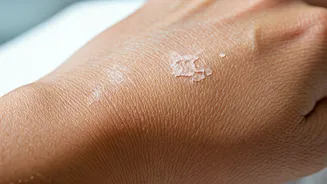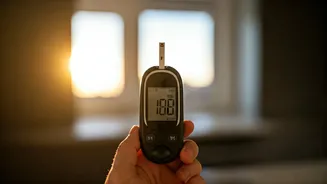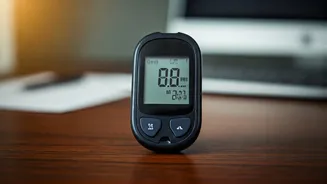Skin's Diabetes Connection
The skin can provide valuable insights into your health. In the context of diabetes, it can offer some early indications. Several skin conditions are frequently
associated with elevated blood sugar levels or diabetes itself. Recognizing these visual cues is crucial, as early detection facilitates prompt medical attention and aids in managing the condition effectively. These skin manifestations arise because diabetes affects the body's vascular and metabolic processes. The subsequent modifications in the skin can manifest as various symptoms, signaling potential issues that demand evaluation. It is imperative to remember that the presence of these indicators does not automatically confirm a diabetes diagnosis; they should prompt a consultation with a healthcare professional for accurate assessment and diagnosis. This awareness ensures individuals can seek timely medical assistance.
Velvety Dark Patches
Acanthosis nigricans, characterized by dark, velvety patches, typically appears in skin folds like the neck, armpits, and groin. This condition often signals insulin resistance, a precursor to type 2 diabetes. These patches might also feel thickened and can vary in color from brown to black. While it's not always indicative of diabetes, the occurrence of acanthosis nigricans warrants a check with a healthcare provider to explore potential underlying causes. Recognizing these patches can lead to early detection of insulin resistance and enable timely interventions. This can include lifestyle adjustments, such as improving diet and boosting physical activity, or appropriate medical treatments. Early intervention can help manage the condition and possibly delay or prevent the progression to diabetes. Regular monitoring by a healthcare expert remains essential for anyone who notices these symptoms.
Shin Spots' Appearance
Diabetic dermopathy, also known as shin spots, frequently develops in individuals with diabetes. These skin lesions appear as light brown, slightly indented patches, generally on the shins. They are usually harmless and don't cause any symptoms. The exact reason behind these spots is not entirely clear, although they are believed to be linked to changes in the small blood vessels. While these spots typically don't cause any major health concerns, their presence indicates the need for checking blood sugar levels. Diabetic dermopathy is often a benign condition; however, people with diabetes should make sure to routinely monitor their skin for signs of infection or other difficulties. Regular foot care, including keeping the skin moisturized and inspecting the feet for any sores or blisters, is important. Any unusual skin changes should prompt a visit to a doctor.
Itchy Bumps Eruptions
Eruptive xanthomas are small, yellow or reddish bumps that might be itchy and are often found on the elbows, knees, buttocks, or other areas. They are caused by high levels of fats in the blood (triglycerides), and in people with diabetes, this can be linked to poor blood sugar control. If blood sugar levels are high and not well managed, they can lead to an increase in triglycerides, thus promoting the appearance of these bumps. While not directly harmful, these bumps are a visual indicator of possibly uncontrolled diabetes and elevated lipid levels. They can often be resolved with improved blood sugar management and dietary adjustments. Any emergence of these bumps should prompt a check of blood sugar and lipid levels. It's recommended to consult a doctor for a full evaluation. Proper care can lessen the number of bumps.
Yellowish Eyelid Plaques
Xanthelasma and acrochordons, which involve yellowish plaques on the eyelids and skin tags, can appear in people with diabetes. Xanthelasma are deposits of cholesterol under the skin, which can indicate that cholesterol and triglyceride levels are high. These plaques are often found near the inner corner of the eyelids. Skin tags (acrochordons) are small, soft skin growths that tend to occur in skin folds, such as the neck, armpits, and groin. While xanthelasma and acrochordons aren't directly linked to diabetes, their presence may indicate other underlying metabolic issues, possibly associated with diabetes. Monitoring blood sugar, cholesterol, and triglyceride levels is crucial. Regular check-ups with a healthcare provider and proper management can help in dealing with these skin conditions.
Slow-Healing Sores
Diabetic foot ulcers are open sores that can appear on the feet and ankles and are a serious complication of diabetes. These ulcers often heal slowly, or not at all. High blood sugar can damage blood vessels and nerves, leading to poor circulation and loss of sensation in the feet, which increases the risk of ulcers. Even small cuts or blisters can worsen. These ulcers can cause serious infections and can lead to amputation if left untreated. Proper foot care, including daily inspections for cuts or sores, washing the feet regularly, and wearing proper shoes, is critical for people with diabetes. It is important to control blood sugar levels, get professional foot care regularly, and seek immediate medical attention if any sores or ulcers appear on the feet. Early intervention can prevent severe consequences and protect the health of your feet.














